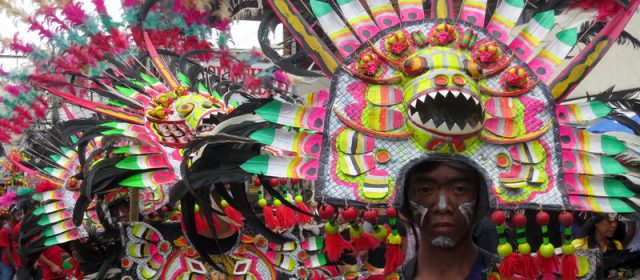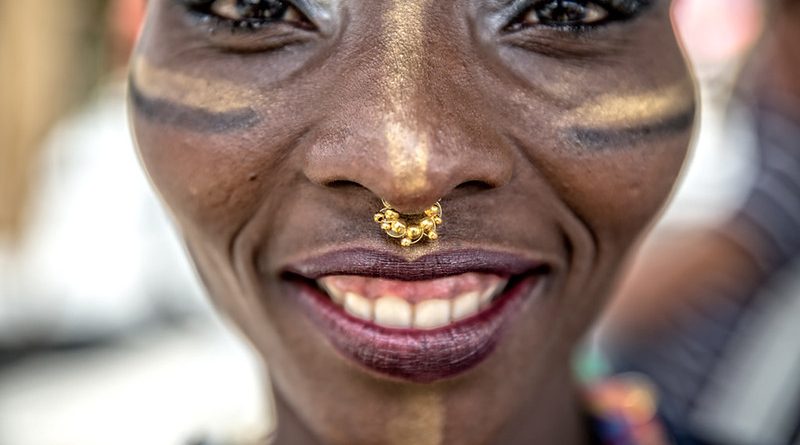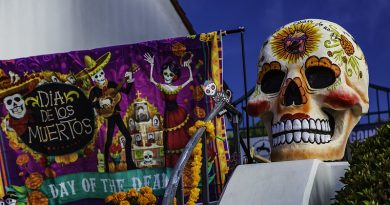WOW: What’s On Where In January
New Years Day, 1 January
Head hurty from all the fun of New Year’s Eve? Worry not, as much of the world has a dedicated public holiday for the first new day of the year. Fortunately, if you need something to get you going right off the bat, there’s a sporting event for everyone to follow somewhere in the world. From football in multiple parts of the world, to horseracing at Cheltenham and raft-racing in the Falkland Islands (all among many other regional activities to get involved in such as soapbox racing or bracing ocean dips), it’s easy to abolish the boredom that may have set in!
Black and Whites Festival, Colombia, 2 – 7 January
The Carnaval de Negros y Blancos has its roots in Spanish Colombia, where a lengthy period of unrest resulted in slaves being awarded one full day of freedom a year. The day has since been celebrated with music, food and costume. Now, the five day affair sees different purposes for each day, designed in turn to represent every soul’s important cultural history in Colombia, and to bring together people from all backgrounds.
Watch: Empire Builders – The Spanish Empire
Coptic Christmas, Egypt, 7 January
Most Egyptian Christians are Coptic Orthodox Christians, celebrating the birth of Christ as it occurs on the Coptic calendar, 7 January. Advent is observed by abstaining from animal produce for the 25 November to 6 January, and the feast day of the birth of Christ is celebrated with a feast of meats, gifts and time spent with family. A popular dish is Fata, a hearty garlic and lamb soup.

Read: Coptic Art and Tombs in Egypt
Dolomiti Balloon Festival 8 – 17 January
Ski season is in full swing in Europe, though the slopes of the Dolomites have much more to offer than white powder and hot-cocoa. This festival sees colourful balloons taking flight across the rugged backdrop of the Dolomites, and draws tourists and spectators from across the continent and beyond. This is not only a festival for spectators — you can book your very own balloon flight, too!
Watch: 5 Minutes In… Skiing the Dolomites
Ati-Atihan, Philippines, 17 – 26 January
Ati-Atihan celebrates the gifting of the Santo Nino – an exquisitely decorated hardwood figure depicting the Child Jesus – by the Spanish Crown to the native Queen of Cebu, Philippines in 1521. The Santo Nino is said to be the oldest Christian artefact in the Philippines. Having been a part of the Spanish Empire for over 300 years, the dominant religion In the Philippines is still Catholicism, however this festival is notoriously all-welcoming and people flock from all over the world to enjoy this colourful and joyous spectacle. The literal meaning of Ati-Atihan is “to be like Atis”, the aboriginal natives of the Philippines, resulting in a display of bright outfits and lots of face-paint . The festival is remarkably similar to Carnival, and conjures similar support and excitement.

Ati-Atihan Festival 2014, lea_r, flickr Creative Commons
Read: Spiritual Street Dancing at Ati-Atihan Festival
La Tamborrada, Spain, 19 -20 January
The quaint city of San Sebastian becomes a cacophony of percussion for the drum filled festival of La Tamborrada. An impressive parade of drummers set out to remember the rule of Napoleon’s soldiers who marched daily in a military march accompanied with drummers across the city, while the city merchants and cooks took to the streets and heckled them. Put on that chef’s hat and give ‘em hell!

Tamborrada Infantil, Estitxu Carton, Flickr Creative Commons
Study Guide: Wellington vs Napoleon
Australia Day, 26 January
The official national day of Australia, this public holiday remembers the landing of the first British fleet in 1788. Eleven ships, led by Arthur Phillip, landed at Port Jackson and raised the British flag with the intention of establishing a penal colony. While the day is widely celebrated among Australians, there has been some controversy over the day with some referring to it as ‘Invasion Day’ as a mark of sympathy to the Aboriginal cause.
By Sofi Summers




